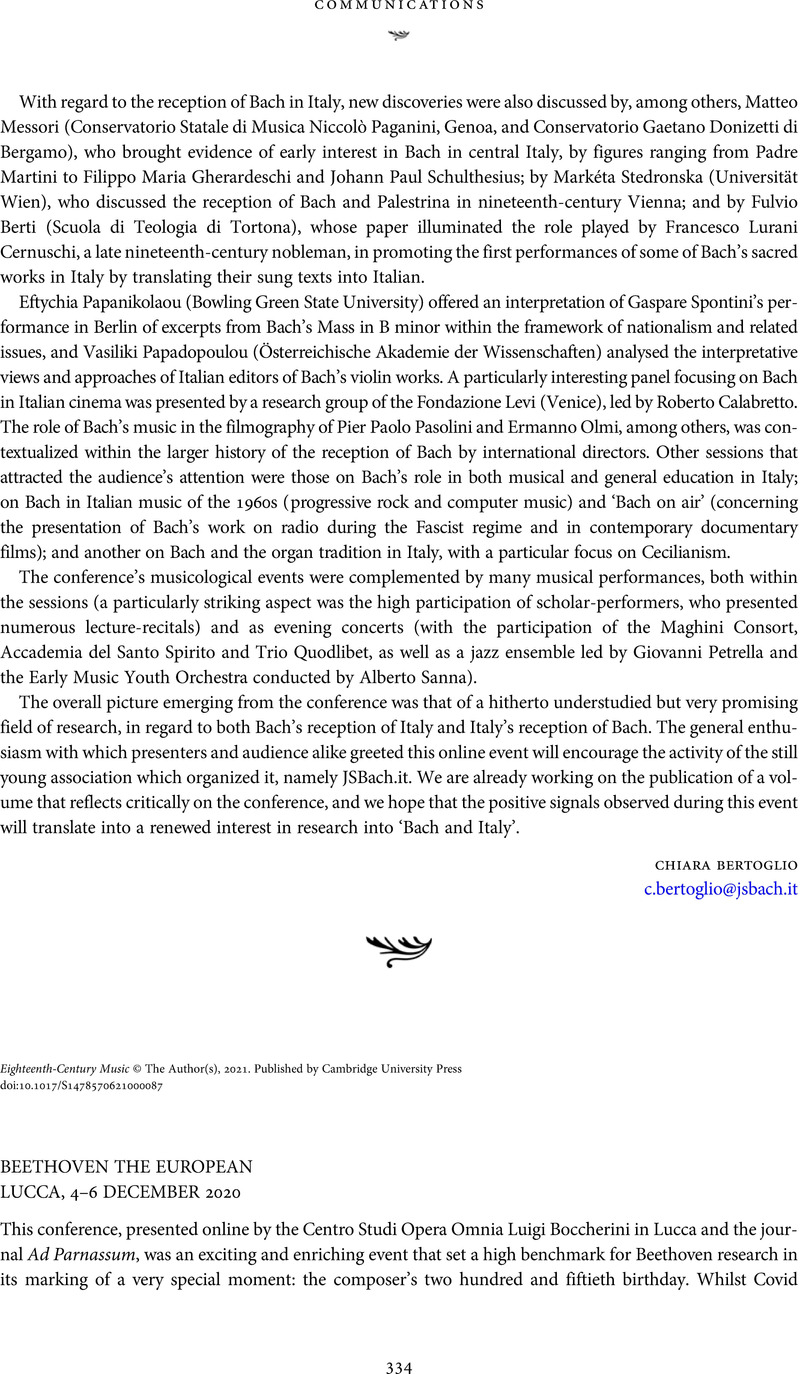No CrossRef data available.
Article contents
BEETHOVEN THE EUROPEAN LUCCA, 4–6 DECEMBER 2020
Published online by Cambridge University Press: 17 August 2021
Abstract
An abstract is not available for this content so a preview has been provided. Please use the Get access link above for information on how to access this content.

- Type
- Communication: Conference Report
- Information
- Copyright
- Copyright © The Author(s), 2021. Published by Cambridge University Press



